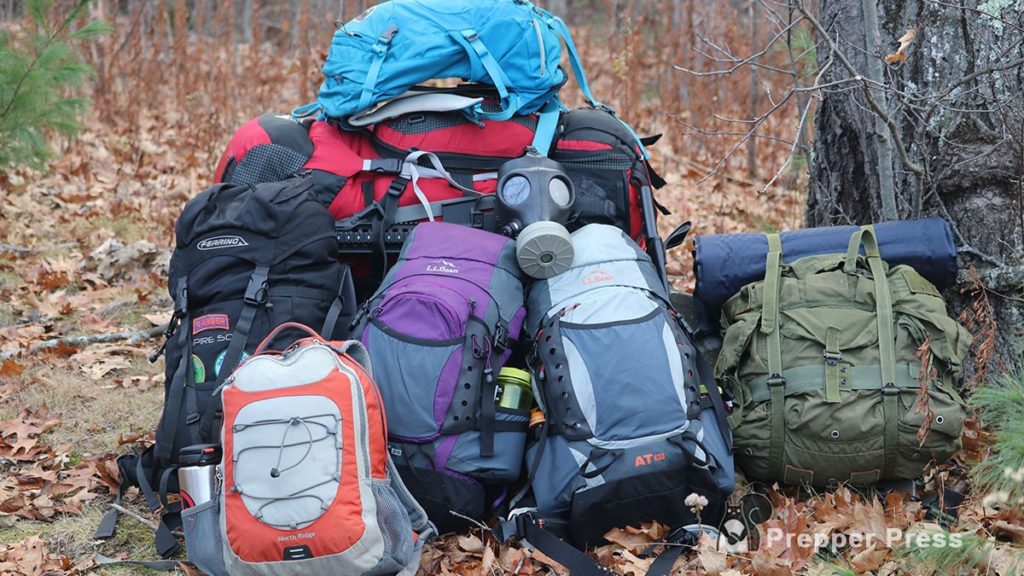
This is a thorough guide to selecting the best bug out backpack. I accentuate “backpack,” because in my opinion, there should be no other bug out bag than a backpack. Prepper totes are cute, but they’re not bug out bags. Neither are duffle bags or suitcases. You need a backpack.
The one exception to that might be a bag stored in your vehicle to hold your vehicle kit. That would have to be a vehicle-specific bag that holds items like a basic wrench set, jumper cables, tire plug kit, etc. But if it’s a bag stored in your vehicle to hold personal survival gear, there’s a good chance you pull it out because you need to leave the vehicle behind. That should be… a backpack.
Now that we have established that, you may be wondering…
Table of Contents
Should I Buy a Bug Out Bag or the Gear First?
Different people have different ideas about this. Frankly, it doesn’t really matter. I get the rationale that you buy the gear first, then you know what size bag you need; but I suggest you start with your bug out mission. In other words, how long will it take to reach your bug out location (BOL) or otherwise reach safety; i.e. the mission?
When you know your mission, you’ll have an idea about how much gear you will need, which determines what size bag you should buy. So, the mission drives both the gear and the bag. What you decide to buy first is entirely up to you as long as both are aligned with the mission.
Modern Hiking Backpacks vs Tactical Backpacks
I want to get something out of the way right from the beginning. All of my recommendations toward the end are for modern hiking backpacks. In other words, you are not going to see me recommend what many other prepper blogs do – military-style packs with lots of MOLLE attachments. There are exceptions to this (5.11 Tactical Rush, for example), but not many.
Why? Three reasons:
- Size. A bug out bag needs to be of a certain size, and most “tactical” backpacks simply aren’t big enough.
- Design. Tactical backpacks are designed more for going into combat situations than they are for getting away from people. A tactical backpack will make it easier for grabbing spare AR magazines and attaching communication gear. A hiking backpack will make it easier to carry a heavier, bulkier load for longer distances.
- Attention. You know the gray man concept? It’s about not standing out. Nothing screams “I have sweet gear” like a tricked out military tactical pack. This, in a collapse situation, could make you a target. A “regular” backpack makes you look like a “regular” person.
This military surplus backpack is not like a modern military tactical backpack like those available at Mystery Ranch.
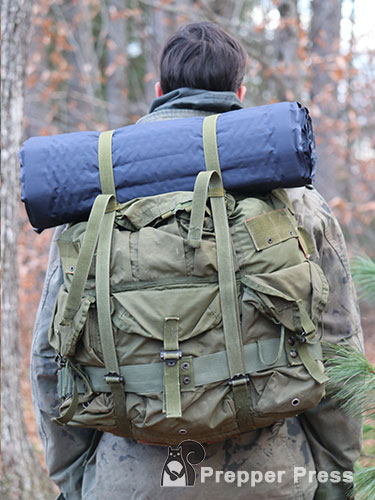
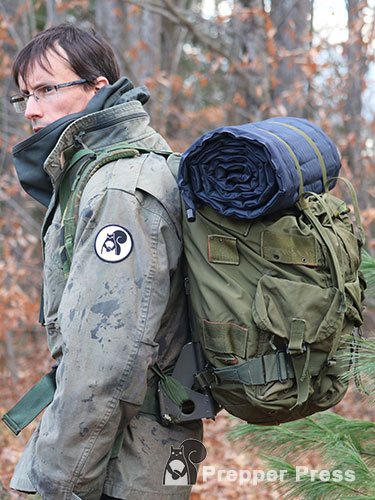
The price on a pack like this at your local Army Navy store might be attractive, but it won’t provider the same level of quality that you’ll find in a new hiking pack. It’s less comfortable, heavier, and more difficult to access and secure your gear.
What Size Bug Out Bag Should I Buy?
The bug out bag you buy should be just big enough for the mission. It must be able to carry the necessary gear to help you achieve the mission.
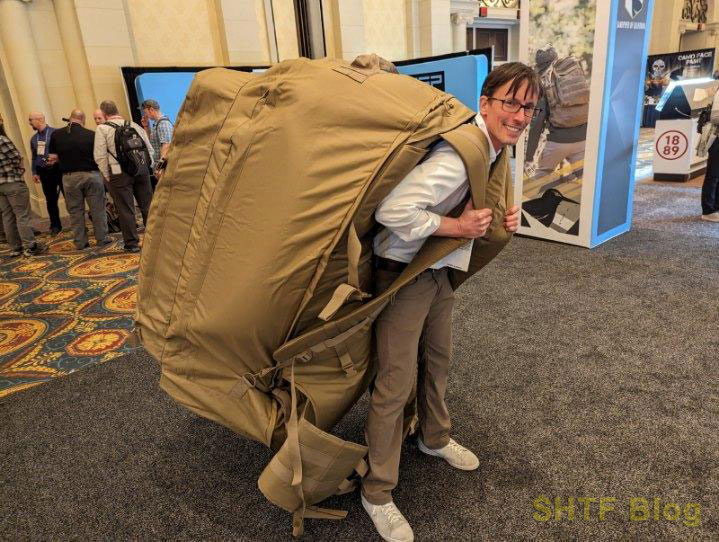
The widely (and wisely) accepted prepper belief is that – in most cases – you build a “72-hour bug out bag.” If you are unsure of where you would go in a bug out situation, or if the mission would change depending on the particular situation, this is the default size bag you should build.
Three Bug Out Bag Backpack Sizes
Bug out bag backpacks are going to come down to three basic sizes: overnight, multiday, and expedition. Again, you need to match the size of your bag to the mission you have.
Overnight Bug Out Bags
If you have a more time-limited bug out objective, maybe you want to get from one end of the city to another, for example, then you are looking at an overnight backpack, something in the 30-50 liter in size.
It’s entirely possible that you could get by with a smaller pack than this, but that’s not something I would recommend. If you go smaller than this you lose pack versatility and end up in a class of backpacks that lack the important features critical to any bug out bag backpack (more on that in a bit).
Both of the backpacks pictured below max out at 35 liters, so they are on the smaller end of overnight backpacks.
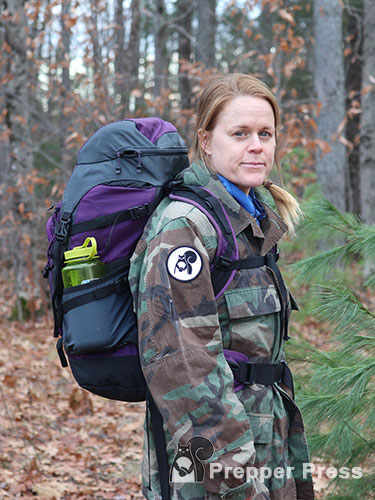
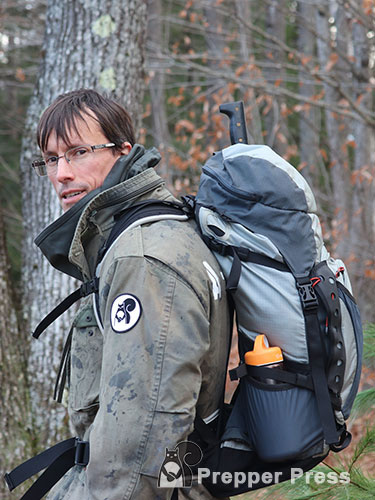
Note how the pack on the right rests away from the back, allowing for ventilation. This is great for warmer seasons or climates. The pack on the left sits directly against the back, which keeps you much warmer in colder temps.
If you’re thinking the packs look a little small for a sleeping bag, sleeping pad, cookware, and related gear, you are generally right. However, today’s ultralight sleeping bags and pads can pack surprisingly small. Need proof? See what some Appalachian Trial thru-hikers have achieved in pack size.
A decent pack will also have enough attachment points to secure additional gear on the outside. Overdoing this will create more catch points for branches and increase noise from gear bouncing around, but it’s an option. You want a bug out bag backpack that will move as seamlessly as possible with your body.
Multiday Bug Out Bags
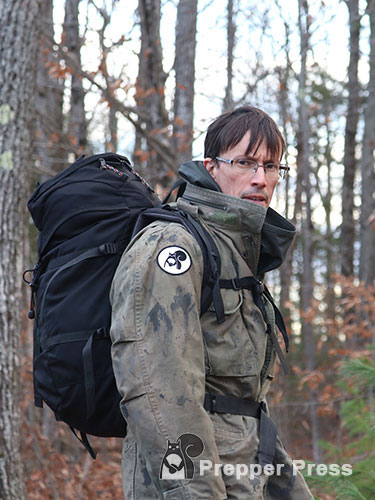
By following the conventional prepper wisdom and building a 3-day bug out bag you are, by default, looking at multiday backpacks.
These are packs that are 50-80 liters in size. When in doubt, aim for this size.
They are designed to carry bulk and weight – enough gear so that you could safely live out of the bag for up to three days without having to resupply.
The pack I’m wearing in the picture to the left is a 50-liter pack, so it’s as small as you’ll want to go for a multiday pack. While it could be used for multiple days in a pinch with careful gear selection, it’s a pack I generally reserve for winter day hikes.
Winter gear is bulkier and heavier, so extra space is necessary when bugging out (or hiking) in the winter. It also sits directly against the back, so it’s a warmer pack to wear.
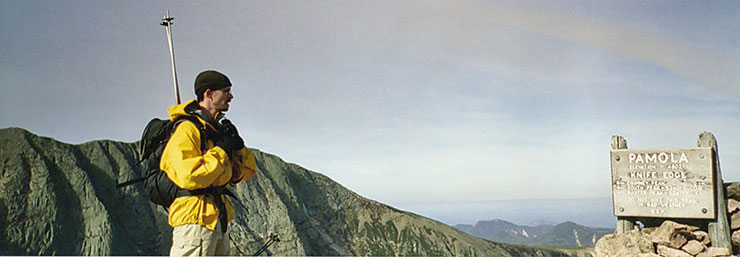
Expedition Bug Out Bags
Maybe your bug out mission requires even more time. Maybe your plan is to disappear into the woods for a few weeks until everything blows over, or you just need more than three days to reach your BOL. It’s also possible that you may need to carry additional gear for others; children, for example.
If this is you, then you are looking at an expedition backpack, something over 70 liters in size. A bug out bag backpack of this type is a pack on steroids.
This is my expedition pack:
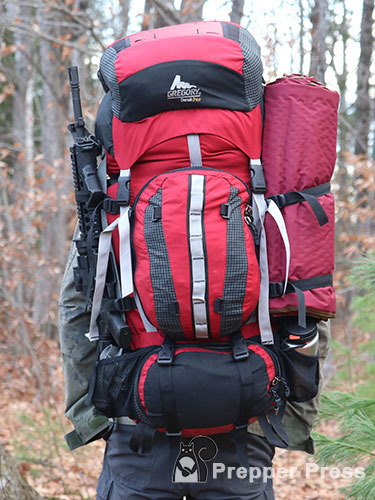
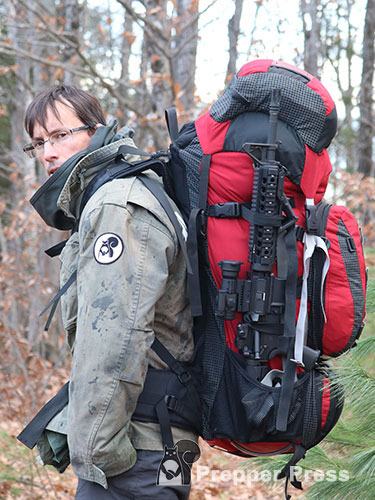
This backpack is the now discontinued Denali Pro by Gregory. This thing holds a whopping 106 liters!
Of course, there’s not much “gray man” about walking around with a pack this size, sleeping pad strapped to one side and an AR-15 on the other, but if I had to bug out into the woods for a week, there is no other pack I would want to carry.
This is a pack I bought years ago when I was doing overnight alpine hikes in the winter. It was the Cadillac of winter expedition packs at the time. It wasn’t cheap, but it has served me well for many years.
In fact, I still use it as my multiday pack. It’s a bit oversized for that, but it is exceptionally comfortable with all the quality and bells and whistles that you would expect in Gregory packs.
Should I Get Measured for a Backpack?
A lot of companies will advise that you measure your torso length, shoulder width, waist circumference, etc. – and then buy a backpack to fit. There is certainly nothing wrong with this idea, and if you want to follow that advice, you can read about taking your pack measurements here and here.
For me, that is a secondary step after you have defined the mission. Why? Well, if you’re a “big and tall” man, you could get sized for an enormous pack. That’s all well and good if you are on an extended bug out, but if you just need to get out of the city, you could be wearing any very over-sized pack that is unnecessarily cumbersome, but that also make you stand out; i.e. become a target. A man carrying a massive pack through downtown Boston during a crisis when everyone is desperate and freaking out… sounds like a target to me.
On the other hand, maybe you’re a woman with a small frame. Your measurements would point you toward smaller-sized packs. That’s well and good, but if your mission requires a 3-day bug out, you won’t have enough room in the recommended pack to carry the gear needed to live out of it for that long. You may – out of necessity – need a bigger pack than what your measurements might suggest.
But What Exact Size Bug Out Bag Should I Get?
Any decent backpack worth buying will allow you to fine-tune the fit. Hip belts will tighten, shoulder straps will have various adjustment points, and some packs even have adjustable suspension systems that go up or down to better fit the length of your torso. You will get these features by buying a quality bag.
So, the “exact” size comes down to:
- buying a bag big enough for the mission,
- buying a decent bag with good adjustment features, and
- adjusting it to fit your body.
That’s it!
There are other ways to compensate for size limitations, mainly through gear choices. Back to the example of the woman with a small frame who needs a multi-day pack, you can make life a bit easier by packing lean and buying gear that is more compact and more lightweight.
Gear of this type often comes at a higher cost, but it’s a way to fit more gear into a smaller bag at a lower total weight. You will be able to figure all of this out through more research and above all – practice.
Men’s vs Women’s Bags
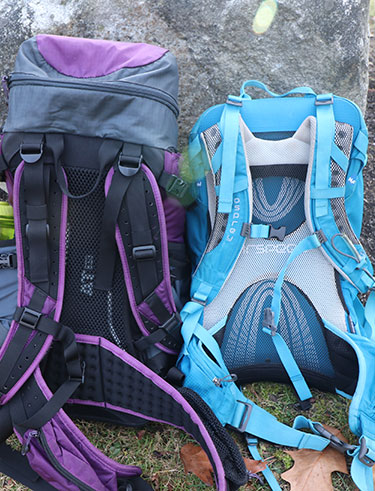
When you are searching for a bug out bag backpack you are going to find packs categorized as either men’s packs, women’s packs, or unisex packs.
Generally speaking, women’s backpacks are built for smaller frames. They are shorter and more narrow. The waistbelt may be contoured to fit a woman’s hips. The shoulder straps may be contoured to the chest.
Men’s packs, on the other hand, are going to be more robust in size. The shoulder straps will have fewer contours. The waistbelt will be configured to men’s hips.
In my experience, this matters less than you might think. If a company labels a pack as “women’s” or “men’s,” it just gives you an idea on the construction.
What matters is the fit. For some men, a women’s pack will work just fine, maybe even better. The reverse is also true for some women. Teenagers, regardless of their sex, will often be better suited to women’s pack.
When I was in college I was gifted a used, high-end women’s backpack. It was of better construction than the other pack I owned at the time (an external frame pack). I used that women’s pack on many overnight trips for years until I eventually wore it out.
So, don’t worry too much whether a pack is labeled a men’s pack or a women’s pack. Some reputable manufacturers don’t distinguish between the two at all. They just make unisex packs.
2 Types of Backpack Frames
If your pack does not have a frame at all, you do not have a bug out bag backpack. You have a school bag or a purse with shoulder straps. A pack without a frame has no business being used in a bug out situation.
This leaves you with two types of frame: external and internal.
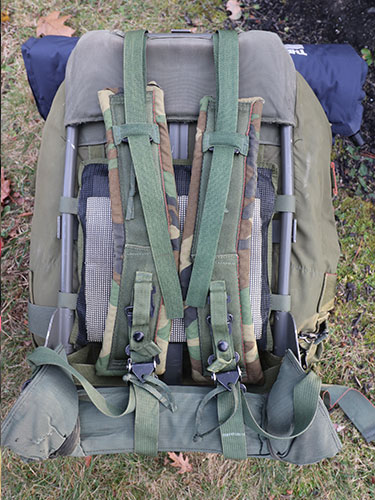
External Frame
My introduction to multiday backpacking began with a week-long summer camp through 4-H, a “teen discovery” program where we hiked, canoed, and lived out of our packs for 7 days. In order to prepare for that adventure, my parents took me to an Army Navy surplus store for a backpack.
While Greg Lowe (founder of Lowepro) created the first internal-frame pack in his Colorado garage in 1967 (source), when I was getting my first multiday pack (late 1980s), external frames still dominated the market.
Technology has come a long way since then, and while you can still find external frame packs, they are no longer the norm – and for good reason.
External frames have visible frames that are good for attaching bulky gear. This makes them good for work purposes (think trail maintenance crew who need to attach chains and pulleys or backwoods hunters who need to haul meat). That is where their advantage ends, however.
External frames make it more difficult to move around quickly, they are heavier, they lack quality suspension systems, and there are far fewer choices.
You will find some diehards who continue to use them, and if that’s your thing – have at it. I would not buy an external frame pack as a bug out bag.
Internal Frame
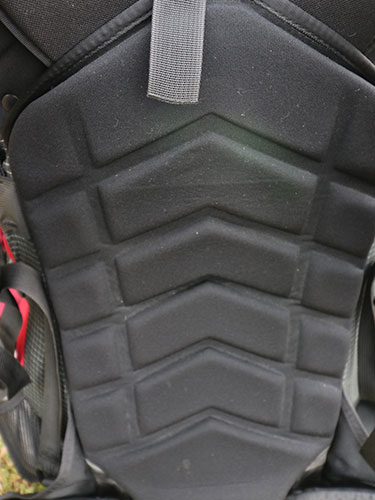
Internal frame backpacks are superior in most ways:
- They carry the weight closer to your body for a better center of gravity. That makes them less awkward to wear when you need to scramble up a trail or bug out in adverse conditions.
- They have a larger internal carrying capacity reducing the need to strap gear to the outside where it is exposed and more likely to get caught on things.
- The shoulder straps are easier to fine-tune and on higher-end packs, the frame will adjust up or down to better fit your torso.
- Internal frame packs are more compact and easier to put in your car or carry on a plane.
You will not be disappointed with a decent internal frame pack. These are packs far more suitable to a bug out situation. You will be more agile wearing one and it will be easier to run or scramble.
If you find an internal frame pack too warm against the back, one reason some people prefer external frame packs, you can buy a pack that both has an internal frame and sets the pack away from your back, as seen in the Overnight Bug Out Bags section.
This brings me to…
Features in the Best Bug Out Bag Backpacks
You’re narrowing the field of backpacks down! You now know that you want a hiking backpack, you know your size, and you know what kind of frame you want.
Keep going and you’ll be ready to secure the best bug out bag backpack to achieve your objective – the bug out mission. With that mission in mind, look at how a pack’s features can help (or hinder) you.
Quality Shoulder Straps
If you are looking at a mid-range or better backpack, odds are it will already have decent shoulder straps. Some shoulder straps will also have D-ring shaped rings that you can use to attach items. I’ve used these primarily to hold a water reservoir hose. The are also suitable for an emergency whistle, handheld GPS, or in some cases, a bug out knife.
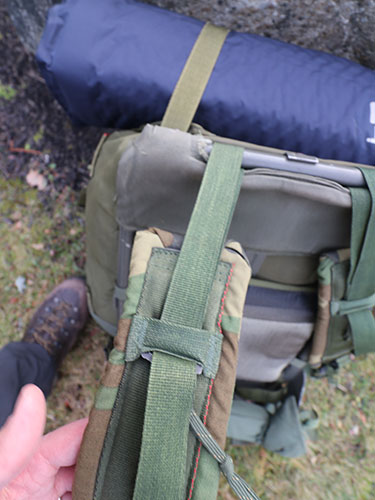
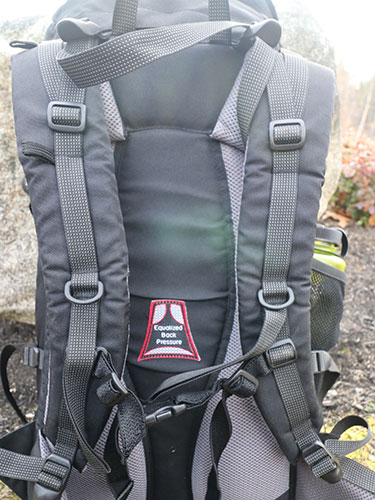
Comfortable, strong shoulder straps are integral to a good bug out bag backpack. But that only accounts for 20% of the pack’s weight. The other 80% should ideally be landing on your hips. That’s why you need…
A Serious Hip Belt
The need for a quality hip belt on your backpack cannot be understated. A hip belt is going to get about 80% of the weight off your shoulders. It is going to be distribute and center the weight. It will reduce shoulder and neck fatigue, and be far more comfortable to wear.
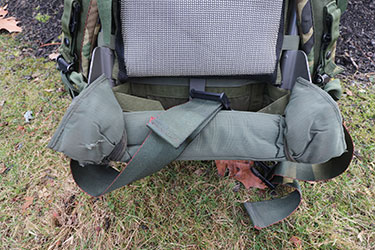
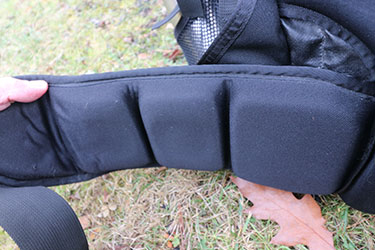
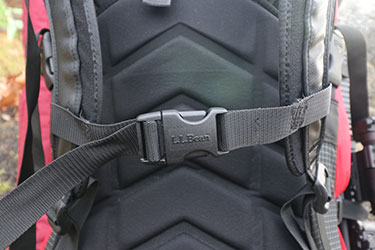
A Sternum Strap
A sternum (chest) strap is going to add further support to your body. Carrying a multiday bag for multiple days will put a lot of strain on your shoulders, regardless of how nice your hip belt is.
A sternum strap will help ease the pressure on your shoulders. They also add stability and comfort, and are a must on any bug out bag backpack.
Extra Features that are Nice to Have
These features are not critical like the others, but they’re nice to have just the same. Sometimes they can make a big difference.
Various Pockets – But Not Too Many
Having different pockets and compartments make it easier access to different pieces of equipment without having to take your pack off and rummage through the entire contents to get something. You will want quick, easy access to items you are likely to use a lot.
Nothing is worse than one big pack with just a center compartment and nothing else. Even a center compartment and a pocket on top is not enough.
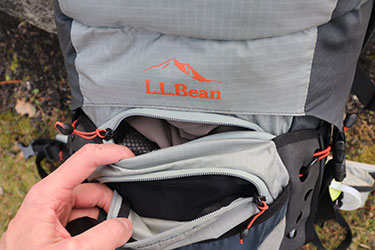
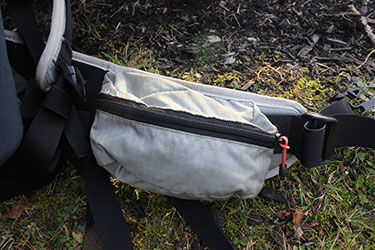
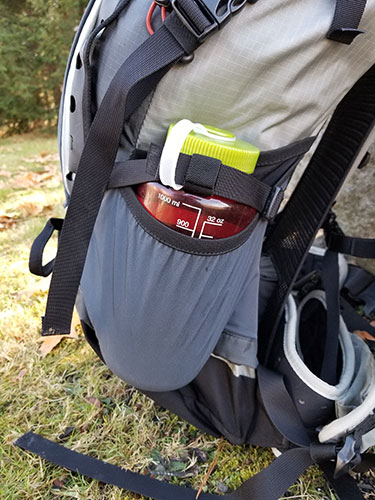
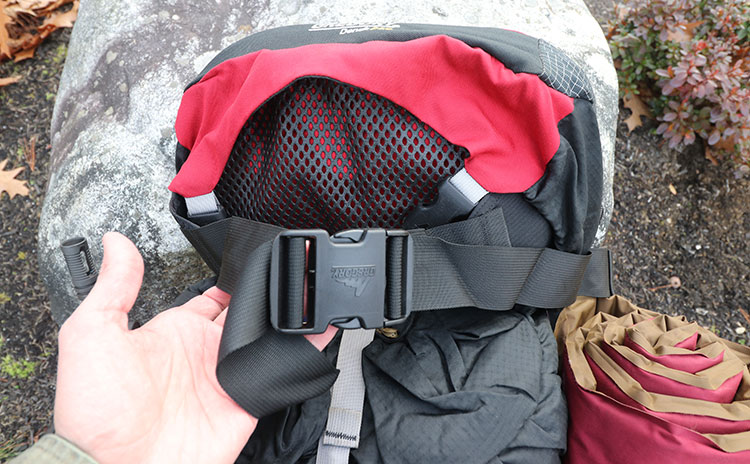
Various Attachment Points
Many newer packs have sleeker designs, containing as much as possible inside the pack itself. Any decent pack will have exterior straps to attach gear to, however, even if only a few pieces.
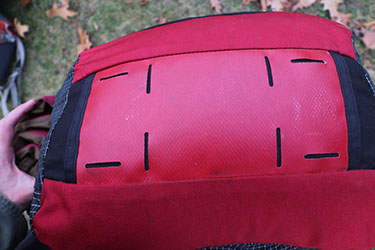
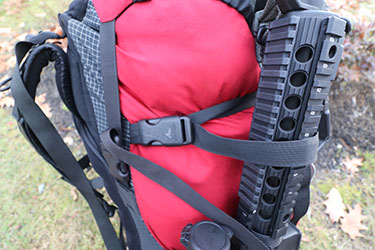
If you want many exterior straps and loops and features, you may be best served by shopping for a technical pack – mountaineering, for example.
Rugged Zippers
Strong zippers are another sign of a good pack. There’s more to it than that, though. Note the difference in these two women’s packs:
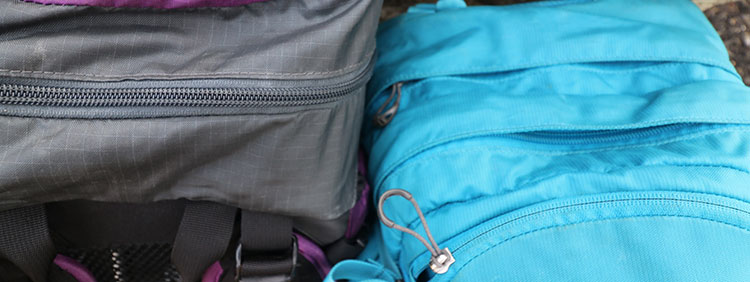
The one on the left has a strong zipper, but it doesn’t have a flap that goes over the zipper to protect it from damage and the elements. The higher end Osprey pack on the right has zipper flaps. It also has long loops on the zippers that make them easy to grab – particularly with gloves on.
We have covered all of the basics you need to know when buying the best bug out bag backpack. Now you might be thinking style, like…
What Color Should My Bug Out Bag Be?
The best color is going to be a forest green, or something close. Navy blue is a good second choice. These are two colors that align with the gray man concept, not standing out. They are common colors that would be relatively suitable hiding in natural surroundings – as opposed to lime green or light blue, for example. Go for an earth tone if you can.
You need to pick the color that matches your mission, however. Maybe concrete gray or desert tan is better for you.
Color choice is personal. Packs come in many colors. Focus on the key components of a good pack to start, narrow the packs down, and then decide on color from what you have available.
My Recommended Bug Out Bag Backpacks
You are now ready to go shopping for a new pack!
There are many good companies and packs out there. Here are some online retailers that either sell their own bags, bags of others, or both:
- Eastern Mountain Sports (EMS)
- Moosejaw (install Rakuten if shopping here for additional cash back)
- Mystery Ranch – High-end, specialized packs that are both tactical and practical.
- Osprey (compare their prices on this site with EMS and Moosejaw)
I have some specific bug out bag backpack suggestions as well. These are not necessarily packs I have owned or worn, but I am either already familiar with the company’s packs, or they are packs that I would look at buying.
Overnight Packs
| Pack | Size | What I Like | Price | Retailer |
|---|---|---|---|---|
| Mystery Ranch Tower | 47L | Interesting square-ish design. Good company. | $$$ | Moosejaw |
| Gregory Paragon | 48L | Burnt Olive color pack from a great company. | $$ | Moosejaw |
| Kestrel 48 | 48L | Sleek, quality pack in black or Navy. | $$ | EMS |
| EXOS 48 | 48L | A good bag from a good company. | $$ | Osprey |
Multiday Packs
| Pack | Size | What I Like | Price | Retailer |
|---|---|---|---|---|
| Mystery Ranch Terraframe | 65L | OVERLOAD system allows pack detachment from frame for more gear. | $$$$ | Moosejaw |
| Osprey Aura (Ladies) | 65L | Great bag with various compartments. | $$$ | Cabela’s and Osprey |
| Levity 60 | 60L | Super ultralight pack. | $$ | Osprey |
| Mystery Ranch Assault Ruck | 60L | Able to be worn over body armor. | $$$ | Mystery Ranch |
Expedition Packs
| Pack | Size | What I Like | Price | Retailer |
|---|---|---|---|---|
| Terraframe | 80L | Mystery Ranch pack in a great green color. | $$$$ | Moosejaw |
| Zenith 105 | 105L | Large capacity pack from a good company. | $$$ | Osprey and Moosejaw |
| Blackjack 100 | 80L | Designed after the standard-issue packs for USSOCOM. | $$$$$ | Mystery Ranch |
Buying a Bug Out Backpack Wrap Up
Thanks for sticking with me through the post. So, to summarize:
- Determine your mission.
- Determine the size pack that suits your mission.
- Pick the type of frame you want.
- Look for a pack with the key features.
- Pick your preferred color.
- Go shopping!
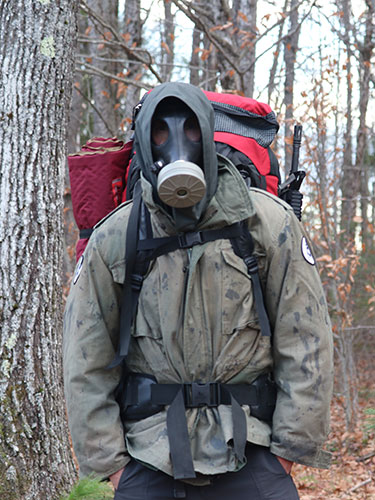
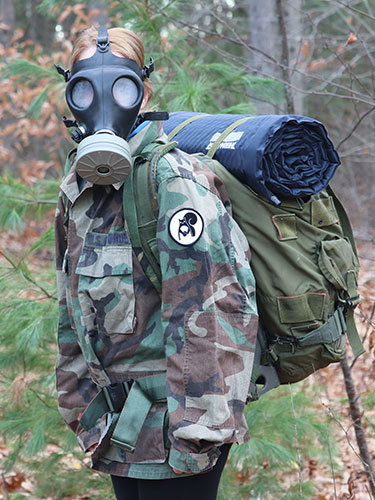
Find something I said wrong or lacking? Have an entirely different experience altogether? What’s your go-to bug out bag backpack?
Let me know in the comments section.

7 comments
Getting measured for a backpack is more about finding a suspension that will fit you. There are many models with adjustable suspension and they usually list what torso size it will accommodate. If the suspension doesn’t fit your body you will be miserable. While not required, it is part of finding a pack that fits “you”. It doesn’t do you any good to consider a pack if the minimum torso size is is several inches bigger than your size. Hip belts may be a different matter. Some manufacturers build their packs in a way that the belt that comes with the pack can be swapped out for a different belt. Just something to look at when trying to find a pack that fits.
Yep, many good packs are adjustable. Since this article I’ve purchased a quality Osprey pack (looking for something less massive than the Gregory for overnights). The Osprey packs are impressive. They adjust all over the place.
Excellent info! I’m new at this and definitely needed the info you provided I’m positive that this will save me much hassle and money. Thanks for sharing your wisdom.
I live at my bug-in location on acreage on a mountain top. My mission is most likely, escape an approaching forest fire or a big storm that’s knocked out our power, and get my family (wife and 2 daughters under 5yo) to safety. Therefore I’m looking at throwing everything in the 4×4 and driving to a relative or hotel. If we had to abandon the vehicle for whatever reason and hoof it, there is no way my 2yo could keep up on foot. So we have a child carrier by Osprey. My wife would most likely carrier her. It’s additional storage is limited. That means me carrying essential food/clothing/gear for me, my wife, and my daughters. I like the versatility of the Osprey Transporter 95 or the Farpoint 80. They don’t have frames, but they do have comfortable straps and the Farpoint even has a belt. In the above scenario, I’m not treking for days at a time. Rather its a last ditch temporary thing. The grab and go easy of something more duffle-like that can be rucked in a pinch appeals to me and takes up less cargo space in the SUV than a full frame backpack would. Depending on how much time we have, we will want to pack our vehicle up with valuables, keepsakes, additional food, etc.
Sounds like you have a well thought out plan. That all makes sense to me.
This is not a one side fits all solution, but rather and adaptive solution that will be refined with experience and understanding of what works for you and what doesn’t. Technology and gadgets will change and that can also be a factor. The other issue being that at some point you have to actually try this out. If you are not doing that then any advice in this area is rendered mute as you have no data or metric to base it on. You are trusting others with you safety rather than get a start point (advice or articles) and then putting it into practice. Also physical limitations or monetary issues will impact your choices. Figure them out. Finally, as it has been stated before *NEEDS vs. WANTS*
Recommend comparing the new military backpacks. They are internal frame with plenty of padded straps and belts. Made to last. I rebuilt my large Alice pack with the new straps and belts. What a difference and a lot less money.